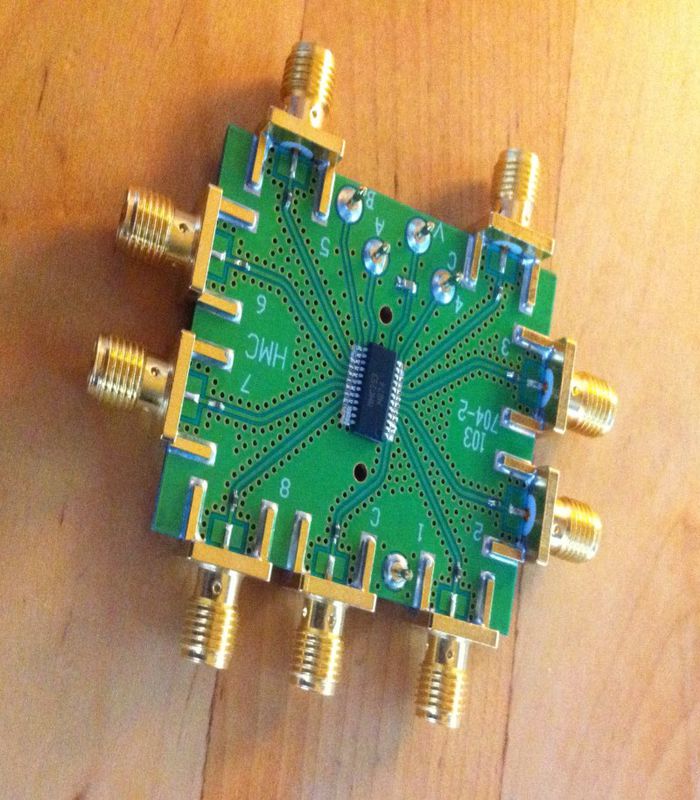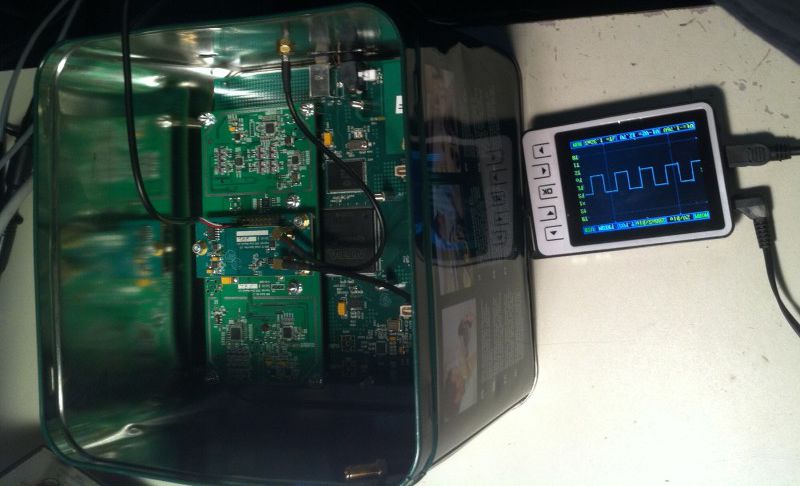Difference between revisions of "SDRDF"
m (→References) |
|||
| Line 4: | Line 4: | ||
This page is based around [http://www.youtube.com/watch?v=NSC4Y8yA-jY a presentation I gave on the subject]. You are encouraged to [http://www.youtube.com/watch?v=NSC4Y8yA-jY watch the video] to learn about RDF, and how it can be done (mostly) in the software domain (using Software Defined Radio, such as a [[USRP]]). I refer to this as ''Software Defined Radio Direction Finding'' ('''SDRDF'''). | This page is based around [http://www.youtube.com/watch?v=NSC4Y8yA-jY a presentation I gave on the subject]. You are encouraged to [http://www.youtube.com/watch?v=NSC4Y8yA-jY watch the video] to learn about RDF, and how it can be done (mostly) in the software domain (using Software Defined Radio, such as a [[USRP]]). I refer to this as ''Software Defined Radio Direction Finding'' ('''SDRDF'''). | ||
| + | |||
| + | [[File:DUF-Mobile.jpg|800px|thumb|left|End result of this project]] | ||
=== Traditional Hardware-based RDF === | === Traditional Hardware-based RDF === | ||
| Line 75: | Line 77: | ||
The control lines need to come from the SDR's GPIO pins, since the switching rate needs to reside in the same clock domain. | The control lines need to come from the SDR's GPIO pins, since the switching rate needs to reside in the same clock domain. | ||
| + | |||
| + | [[File:RF_Switch_Board.jpg|800px|thumb|left|RF switch]] | ||
=== USRP === | === USRP === | ||
| Line 83: | Line 87: | ||
Therefore, following firmware modification, the switching signal will be directly output from the FPGA. As the FPGA is driven by the onboard crystal oscillator, the same clock will be used to time reference sample generation on the host computer, Therefore a software signal source (Signal Source block in GNU Radio) can be used as the reference signal. However correct direction (orientation) readings will still require reference phase calibration. | Therefore, following firmware modification, the switching signal will be directly output from the FPGA. As the FPGA is driven by the onboard crystal oscillator, the same clock will be used to time reference sample generation on the host computer, Therefore a software signal source (Signal Source block in GNU Radio) can be used as the reference signal. However correct direction (orientation) readings will still require reference phase calibration. | ||
| + | |||
| + | [[File:USRP-WBX_DSO-Nano_FPGA-Clock.jpg|800px|thumb|left|Visualising clock signal from USRP FPGA using a DSO Nano]] | ||
{{RF}} | {{RF}} | ||
Revision as of 16:44, 11 June 2012
Contents
[hide]Introduction
Radio Direction Finding (RDF) is the act of locating the position of a transmitter. This can be done in a number of ways, using different hardware configurations depending on the properties of the signal-of-interest and the chosen RDF technique.
This page is based around a presentation I gave on the subject. You are encouraged to watch the video to learn about RDF, and how it can be done (mostly) in the software domain (using Software Defined Radio, such as a USRP). I refer to this as Software Defined Radio Direction Finding (SDRDF).
Traditional Hardware-based RDF
Pseudo-doppler DF setups usually perform the antenna switching, filtering and 'direction finding' all in hardware. Only the AF (Audio Frequency) output of a separate radio is required as input.
Here is a great homebrew example:
- http://www.pi4wag.nl/index.php/pseudo-doppler-radio-direction-finder
- http://members.chello.nl/~w.hofman/pa8w/dopplerRDF.htm
There are many others. One common design is known as the Roanoke Doppler.
References
To learn more about the fundamentals of RDF, please consult the following sources. If you can think of any other helpful ones, please feel free to contact me.
- "Transmitter hunting: radio direction finding simplified" By Joseph D. Moell, Thomas N. Curlee
http://books.google.com.au/books?id=RfzF2-fHJ6MC&lpg=PA126&pg=PA120#v=onepage&q&f=false
Historical perspective:
Presentation
This is a presentation I gave on SDRDF for Ruxmon in early 2012 at Google's Sydney HQ:
Theory
Finding the direction to the transmitter requires one to measure phase difference of pseudo-doppler signal against a known reference (e.g. 'North'). The pseudo-doppler signal is introduced (superimposed on the demodulated signal) by electronically rotating the antenna array against a reference signal of the same frequency as half the switching rate.
To calculate the phase difference in GNU Radio, please refer to part 5 of my GNU Radio Tutorial series:
Implementation
Only two items of hardware are required:
- an electronic antenna switch
- a Software Defined Radio with GPIO
Here, the following has been used:
The crucial design point is that:
- the antenna clock must be in lock-step with reference signal on computer
The brilliant thing about SDR is that it allows for same clock source to:
- switch the antenna array, and
- control the rate at which the reference signal is generated in software
This is to say: the SDR hardware clock clock is the same as that which is used as the time reference for the software DSP.
Antenna Switch
RF switch can be connected to four antennas in usual configuration.
The active antenna is selected by placing the binary number of the antenna port onto the two least-significant control pins (AB) of the RF swtich. This is equivalent to counting from 0 to 3 in binary using the two control lines.
The control lines need to come from the SDR's GPIO pins, since the switching rate needs to reside in the same clock domain.
USRP
A USRP with a WBX daughterboard is perfect for receiving narrowband FM signals on VHF and UHF. It also allows for easy interfacing to the software DSP layer in GNU Radio.
The only adjustment required is that of re-targetting two of the host- (PC-) controlled GPIO pins on the FPGA for use as the 'counting' control channels connected to the RF switch.
Therefore, following firmware modification, the switching signal will be directly output from the FPGA. As the FPGA is driven by the onboard crystal oscillator, the same clock will be used to time reference sample generation on the host computer, Therefore a software signal source (Signal Source block in GNU Radio) can be used as the reference signal. However correct direction (orientation) readings will still require reference phase calibration.
| ||||||||||||||||||||||||||||||||||||||||||||||||||||||||||||||||


